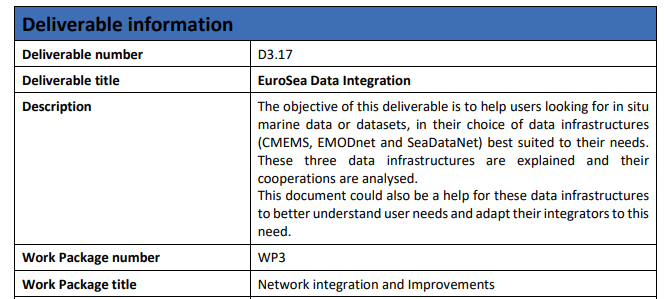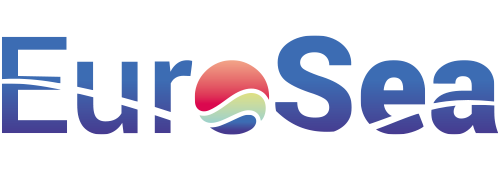
Description
The Data Integration Guidelines (D3.17) function as a structured framework designed to streamline the process of consolidating data from diverse sources. These guidelines aim to facilitate more efficient and increased data delivery through major aggregators, namely EMODnet, CMEMS, and SeaDataNet. By optimizing data integration, the guidelines are expected to boost the performance of these platforms, potentially leading to enhanced CMEMS services/products.
Impact During the Project
Streamlined Data Consolidation:
Traditional State: Prior to the establishment of standardized guidelines, data integration processes might have been inconsistent or inefficient, resulting in delays or discrepancies in data delivery to aggregators.
Advancement: The Data Integration Guidelines provide clear and uniform processes for integrating diverse data sources. This standardized approach ensures swift, consistent, and reliable data delivery to platforms like EMODnet, CMEMS, and SeaDataNet.
Enhanced Data Compatibility and Interoperability:
Traditional State: Without centralized guidelines, there might have been challenges related to data compatibility and interoperability when merging datasets from different sources or formats.
Advancement: The guidelines ensure that data, irrespective of its origin, is prepared and presented in a compatible and interoperable format. This simplifies the process of merging and analysing diverse datasets on aggregating platforms.
Impact Post Project
Optimized CMEMS Services and Products:
Traditional State: Inefficient or inconsistent data integration could have affected the quality and timeliness of services/products offered by platforms like CMEMS.
Advancement: By ensuring regular, reliable, and efficient data delivery, the guidelines enhance the capacity of CMEMS to offer updated and high-quality services/products. An optimized data flow can lead to better real-time monitoring, advanced modelling capabilities, and more accurate forecasts.
Strengthened Foundations for Future Research and Collaboration:
Traditional State: The lack of standard data integration procedures could pose challenges for future marine research projects, especially those involving collaborations across different institutions or regions.
Advancement: The Data Integration Guidelines, by serving as a benchmark, facilitate seamless collaborations in future endeavours, ensuring that data from diverse sources can be readily combined and analysed.
Advancement over and above State of the Art
The Data Integration Guidelines (D3.17) represent a pivotal move towards ensuring that marine data, irrespective of its source, is seamlessly integrated into major aggregating platforms. By prioritizing efficiency, consistency, and compatibility, these guidelines pave the way for improved services/products on platforms like CMEMS. Moreover, they set a gold standard for future marine research projects, emphasizing the need for structured data integration in the age of collaborative and interdisciplinary research.
In essence, these guidelines not only enhance the current capabilities of platforms like CMEMS but also ensure that marine data remains accessible, consistent, and reliable for years to come.
Links and References
Link to D3.17- EuroSea data integration: https://eurosea.eu/download/eurosea_d3-17_eurosea_data_integration/?wpdmdl=5640&refresh=650197c7bd4711694603207
